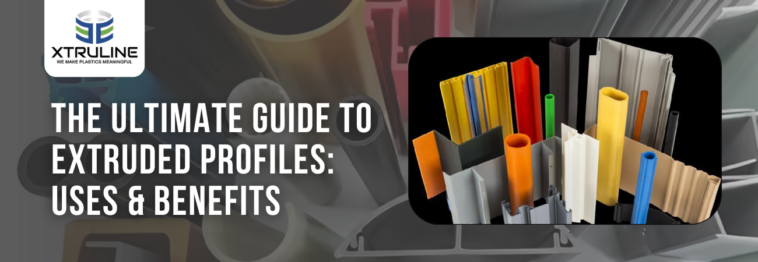Introduction
Extruded profiles play a crucial role in various industries, including construction, lighting, automotive, and plumbing. Whether it’s co-extruded profiles, custom designs, or PVC variants, these components provide exceptional precision, durability, and versatility. This comprehensive guide explores the world of extruded profiles, detailing their manufacturing process, benefits, applications, and significance in modern industry practices.
Understanding Extruded Profiles
Extruded profiles are structural or functional components created by forcing raw materials, such as PVC, UPVC, or acrylic, through a specially designed die under high pressure. This method results in consistent cross-sectional shapes that can be customized for specific applications.
The extrusion process ensures accuracy, uniformity, and strength, making these profiles ideal for various applications, including window frames and LED light diffusers. The materials used—ranging from plastic and PVC to acrylic—offer distinct characteristics like heat resistance, flexibility, and durability.
Common Applications of Extruded Profiles:
-
Window and door frames
-
Lighting channels
-
Protective seals
-
Automotive trims
-
Water management systems
The Extrusion Process Explained
The extrusion process is an efficient manufacturing method that transforms raw materials into functional profiles. Here’s a step-by-step breakdown:
-
Material Selection: The raw material is chosen based on its physical and chemical properties to match the intended application.
-
Heating and Melting: The selected material is heated to a molten state, ensuring it is pliable enough to be shaped.
-
Die Extrusion: The molten material is pushed through a custom-designed die, forming the required shape.
-
Cooling: Once the profile emerges from the die, it is rapidly cooled to solidify its structure.
-
Cutting and Finishing: The solidified profiles are cut to the desired lengths and may undergo additional finishing processes.
This precise process guarantees consistency and quality while minimizing material waste and optimizing production efficiency.
Types of Extruded Profiles
Extruded profiles come in different forms to meet industry-specific requirements. Below are some common types:
-
Co-Extruded Profiles: Manufactured using two or more materials in a single extrusion process, co-extrusion enhances functionality by combining characteristics like flexibility and UV resistance.
-
Custom Extruded Profiles: Designed to meet unique specifications, these profiles cater to industries requiring specialized shapes, sizes, or material properties.
-
PVC Extruded Profiles: Widely used for their durability, cost-effectiveness, and resistance to environmental factors such as moisture and chemicals.
-
Plastic Extruded Profiles: Made from materials like polycarbonate and acrylic, these profiles are lightweight and ideal for lighting fixtures, retail displays, and protective barriers.
Each type serves a distinct purpose, enabling businesses to optimize designs and improve functionality.
Advantages of Extruded Profiles
Extruded profiles offer several advantages that make them a preferred choice across industries:
-
Durability: Engineered for strength and longevity, these profiles withstand harsh environmental conditions.
-
Cost-Effectiveness: The extrusion process minimizes material waste, lowering production costs.
-
Customization: Profiles can be tailored to specific dimensions, shapes, and material properties.
-
Sustainability: Many extruded profiles are recyclable, supporting eco-friendly manufacturing practices.
-
Easy Installation: Designed for seamless assembly and installation, reducing labor and operational expenses.
These benefits make extruded profiles an indispensable element in modern manufacturing and construction. Read more
This post was created with our nice and easy submission form. Create your post!





